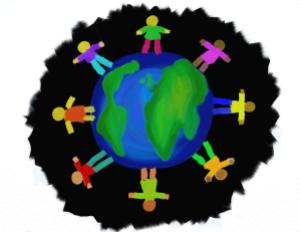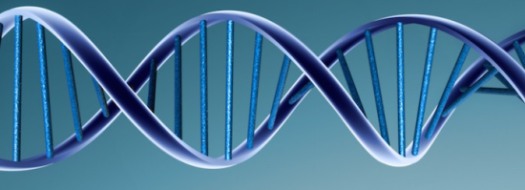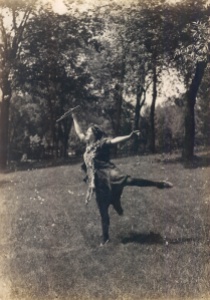 Tuesday, August 30, was the 10th Anniversary of the coming out party for Big Topics at Midnight: A Texas Girl Wakes Up to Race, Class, Gender and Herself.
Tuesday, August 30, was the 10th Anniversary of the coming out party for Big Topics at Midnight: A Texas Girl Wakes Up to Race, Class, Gender and Herself.
I just finished reading the book cover to cover for the first time since it was published.
Of course, for me, this isn’t just a book. It is my own dance of words exploring my journey to come to know myself beyond the often unconscious but nagging dissonance between my heart and spirit and the injustice I experienced within and around me.
Ten years ago I wrote that I knew something different—and far more beautiful—was possible, for me and for the world. I wanted to live a life of justice and fairness for myself and I felt the responsibility to participate in building a loving community and world for my two children, Paul and Laura, their generation, and for generations to come.
I come from a long line of stubborn and tenacious Tipps family women,

and Big Topics at Midnight shares stories of my unstoppable searching. Bold as my focus was, however, it was and was not a journey that could be walked alone. Big Topics at Midnight also includes a diverse collection of fellow pilgrims—including many of you—and organizations that knew how to hold the vision we shared in full alignment with personal/organizational actions and structures.

In the book, I wrote about my life as a myth: The Eight-Eyed Steam Girl in her Little Red Boat. In that myth, I played with two images that are core to my being. I am a many sighted woman: “seeing” with my sharp mind, intuition, noticing interconnections between different aspects of life, my budding awareness of my emotions, my body. I am also a woman who is prone to intuitive bursts of insight that drop into my body like a boulder, mixing my inner fire and water in a way that creates a steamy blast.
Naming that aspect of myself was helpful. But naming itself is rarely enough for the transformation and alignment I was then and am still seeking.
Today, over a decade later, I am coming to both a deeper respect and honoring of the many-eyed and steam-powered aspects of myself, AND I am excited to be in the learning of how to direct my steam energy in a way that allows me to slow down enough to bring all of myself to participate in the way of justice, fairness and love.
For most of my life, when an intuitive knowing dropped inside me, the steamy blast led the way. I felt an urgency to “do something immediately” and was VERY frustrated when others couldn’t see what seemed so obvious to me. I pushed. I fought. I cursed. I always stayed in the conversation, but it wasn’t an easy staying for me or for anyone around me.
In the last year, I’ve realized several things. When I lead from my steam-powered response, I have no access to the variety of other things I know about the issue/situation: my quieter knowledge and experience. With only the steam power, I also am at the mercy of the urgent burst and, from that place, I have a hard time being in partnership with others as I can’t easily listen to their wisdom about the issue. In addition, I’ve never taken time to just appreciate this unique way that clarity drops into my body and knowing.
This past year the eight-eyed steam girl has used her little red boat to carry me to a new shore. I no longer need to let her take over in her explosive, exhausting way. While I want the powerful energy the steam provides and I need to share the clarity it brings, in order for the resulting action to be the movement that I really want, that energy needs to be contained and focused. That is the skill I am now learning on this new shore.
As I refine the process, I first want to stop and take time to honor whatever sight and clarity I am given. These are gifts, and I want to receive them as such.
Next, as I contain and direct the steam, I can take time to see what else I know about the topic at hand. I’ve been on this Big Topic journey for a long time, and I’ve learned some things. I want to give the quieter insights time to emerge and join in with the new steamy clarity that was given.
My urgency to act immediately, with steam blowing out in all directions, comes from a false belief that something horrible will happen if I don’t share what I see immediately—in other words, believing the lie that “it is all up to me.” In truth, since I believe that these intuitive knowings are part of my Spirit sight, I have come to trust that I will also be guided as to the best way to bring the sight I’ve been given to a conversation with my partners.
I am I ready to share my sight and listen consciously to others when I have added my fuller clarity and knowing to the contained and directed steamy sight. No more leading with my urgent fighting, pushing, cursing frustration. I am still responsible to share what is mine to share, but HOW I’m in it can make all the difference.
Now, from this shore, I can both honor the reality that I am an eight-eyed steam girl and act in ways that are in alignment with my heart and spirit and aren’t so exhausting to myself and others.
Near the end of Big Topics at Midnight, I wrote:
Godspeed, my friends, fellow pilgrims on the path and dancers outside the lines. Grandma Ann and I will twirl together forever, weaving beauty across the rips in the fabric of life in the best ways we know how. In this dance, those willing to be cracked wide open will find that our differences add to the grace of our movement. Will you join us, … hoping beyond hope that our dance across the generations would serve those yet to come?

The journey of awakening and alignment of heart, Spirit and actions may not be the easiest one you’ve ever walked, but you won’t find any better way to joy and delight as you continue in a grace-filled dance, feet on our shared earthly home, heart filled with Spirit and Love, in partnership with our global family.
If you’d like a copy of Big Topics at Midnight, just let me know and I’ll send you one (or more if you’d also like to share a copy with a friend). It is a gift to you. Email me (nancy@nancymthurston.com) your address and I’ll mail you the book. If you’d like to send a gift in response, make a donation to Be Present® or Wisdom & Money, the two organizations that fully support me on this journey of transformation.








 Ten days ago, a dozen neighbors gathered in our shared courtyard with a drink in hand to toast the twin Tulip Magnolia trees in their full, pale pink glory. COVID 19 was lurking outside our gate—it was the last time we will be physically close together until this period has ended. Today the blossoms are falling. They remained in place much longer than usual, despite a short snowfall and wind—a gift of beauty we all have been grateful for.
Ten days ago, a dozen neighbors gathered in our shared courtyard with a drink in hand to toast the twin Tulip Magnolia trees in their full, pale pink glory. COVID 19 was lurking outside our gate—it was the last time we will be physically close together until this period has ended. Today the blossoms are falling. They remained in place much longer than usual, despite a short snowfall and wind—a gift of beauty we all have been grateful for. beauty of life and our profound global interconnectedness of all of creation into stark view. This has always been true, yet today our thin and fragile illusions of separation, rugged independence and control have come crashing down.
beauty of life and our profound global interconnectedness of all of creation into stark view. This has always been true, yet today our thin and fragile illusions of separation, rugged independence and control have come crashing down. January and February were my months of travel—Boise, ID, Klamath Falls, OR, NYC and Atlanta. I didn’t get to see Alison Saar’s Harriet Tubman statue while I was in Harlem, but hearing about it has sent me to search out photos and descriptions of this remarkable sculpture. Harriet isn’t depicted as running the underground railroad, but rather becoming it. She faces south, following her divine call to return again and again to lead people from slavery to freedom. Her time called for courage—i.e. being afraid and going forward anyway. Ours does too. We aren’t to try to be like Harriet, or anyone else for that matter, but to become more fully ourselves and to do what makes our heart sing as a gift to our global family.
January and February were my months of travel—Boise, ID, Klamath Falls, OR, NYC and Atlanta. I didn’t get to see Alison Saar’s Harriet Tubman statue while I was in Harlem, but hearing about it has sent me to search out photos and descriptions of this remarkable sculpture. Harriet isn’t depicted as running the underground railroad, but rather becoming it. She faces south, following her divine call to return again and again to lead people from slavery to freedom. Her time called for courage—i.e. being afraid and going forward anyway. Ours does too. We aren’t to try to be like Harriet, or anyone else for that matter, but to become more fully ourselves and to do what makes our heart sing as a gift to our global family. the calls have been keeping touch with family. Howard’s and my heartache at this time of separation from our almost two-year-old grandson, Danny, and his parents has been eased by regularly “hanging out” with him on Google Hangouts. We are exploring having a virtual living room gathering with our family in town sometime this week.
the calls have been keeping touch with family. Howard’s and my heartache at this time of separation from our almost two-year-old grandson, Danny, and his parents has been eased by regularly “hanging out” with him on Google Hangouts. We are exploring having a virtual living room gathering with our family in town sometime this week.
 gone from this earth and this one so newly arrived all encourage me choose integrity, love, equity and respect in every moment. And to have fun along the way.
gone from this earth and this one so newly arrived all encourage me choose integrity, love, equity and respect in every moment. And to have fun along the way.





